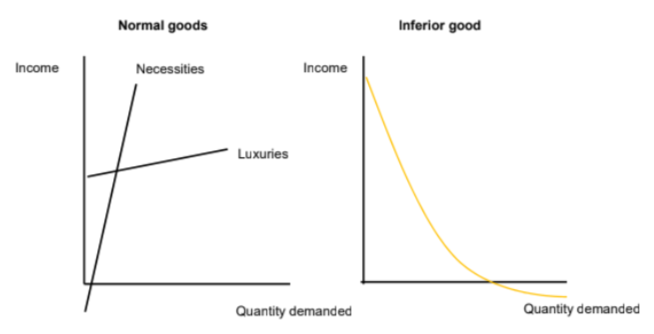4b. Income elasticity of demand
Income elasticity of demand - The demand for a good will change if there is a change in consumer income. Income elasticity of demand (YED) is a measure of that change.
YED measures the responsiveness of demand to a change in income - If the demand for food remained unchanged if income rose then YED would be 0.
A fall in demand when income rises gives a negative value to YED
How to calculate YED
There are 2 ways to calculate YED depending on the information you are given
If you are given numbers you use -
YED = Y/Q * ΔQ/ΔY
Therefore if someone's income rises from £20,000 per year to £25,000 and as result, their demand for sandwiches goes from 100 to 120
20000/100 * 20/5000 = 0.8
If you are given percentages you use:
YED = %ΔQ / %ΔY
Therefore if someone's income rises by 2% and as a result, their demand for a good falls by 5%
-5%/2% = -2.5
Positive and negative numbers
- Normal good (YED > 0) - increased income leads to higher demand
- Luxury good (YED > 1) - increased income leads to a bigger percentage increase in demand eg sports cars
- Inferior good (YED < 0) - increased income leads to a fall in demand eg cheap substitutes (supermarket coffee)
Between -1 and 1 is inelastic
Above 1 is elastic
Mostly normal or inferior? Why? Luxury? Why? Is Price elastic or inelastic? Why?
Burger King - normal - elastic Kettle chips - normal - elastic Taxi - luxury - elastic Macds - inferior - elastic US - luxury - elastic

Why do the curves not start at the origin?
- For necessities, people need these to survive so even if income is <0 they will still purchase some (e.g. by borrowing/using savings etc)
- People will not buy luxuries when their income is low